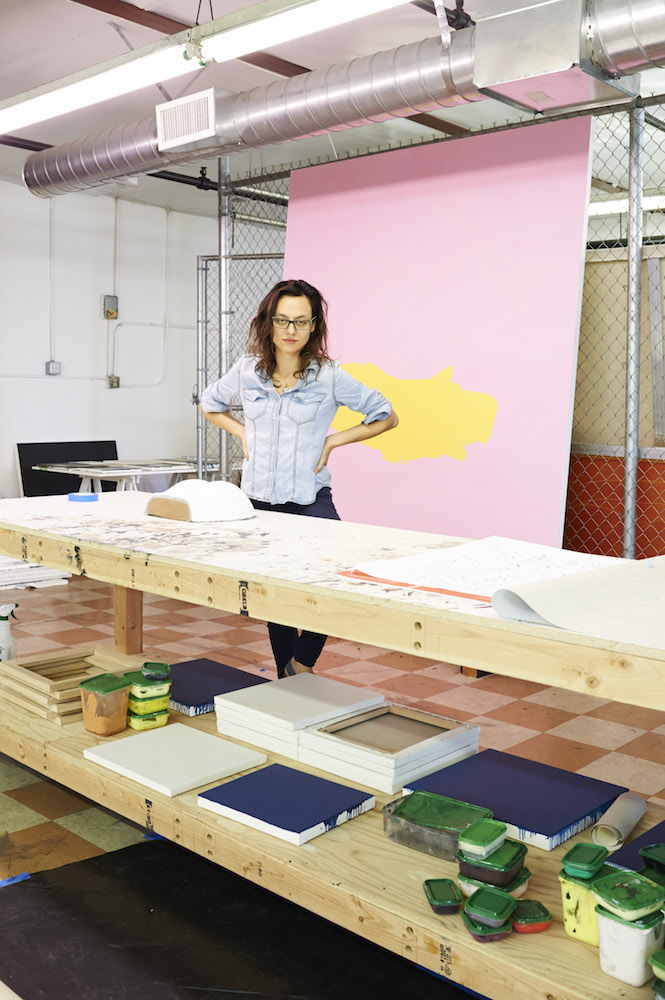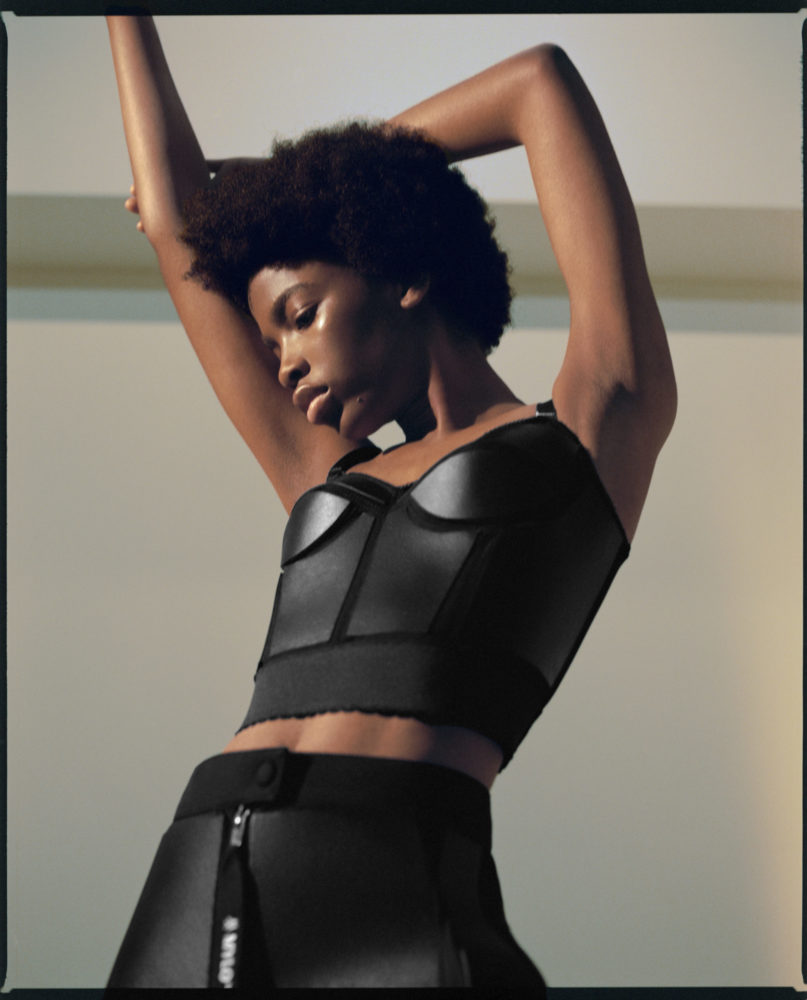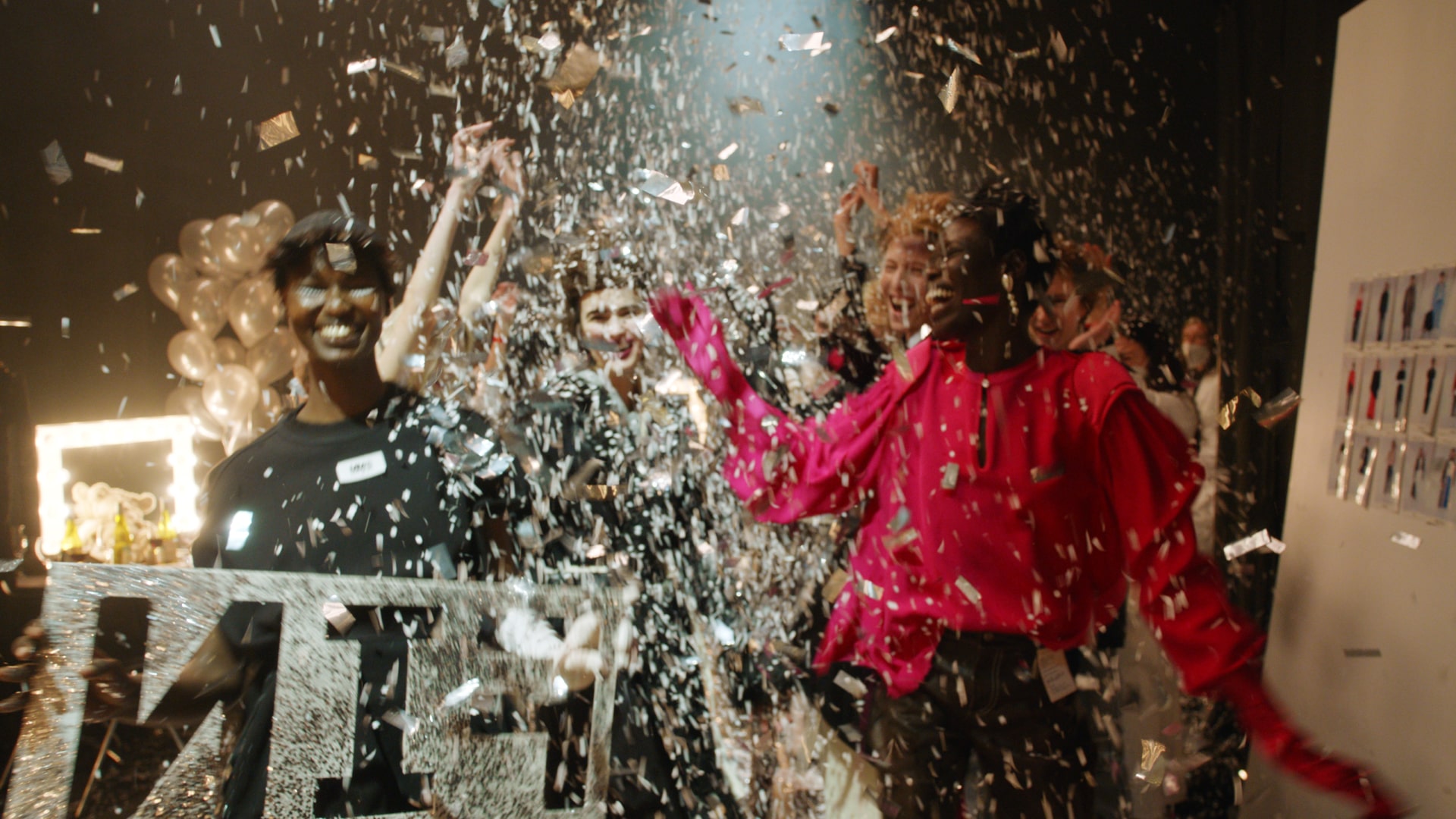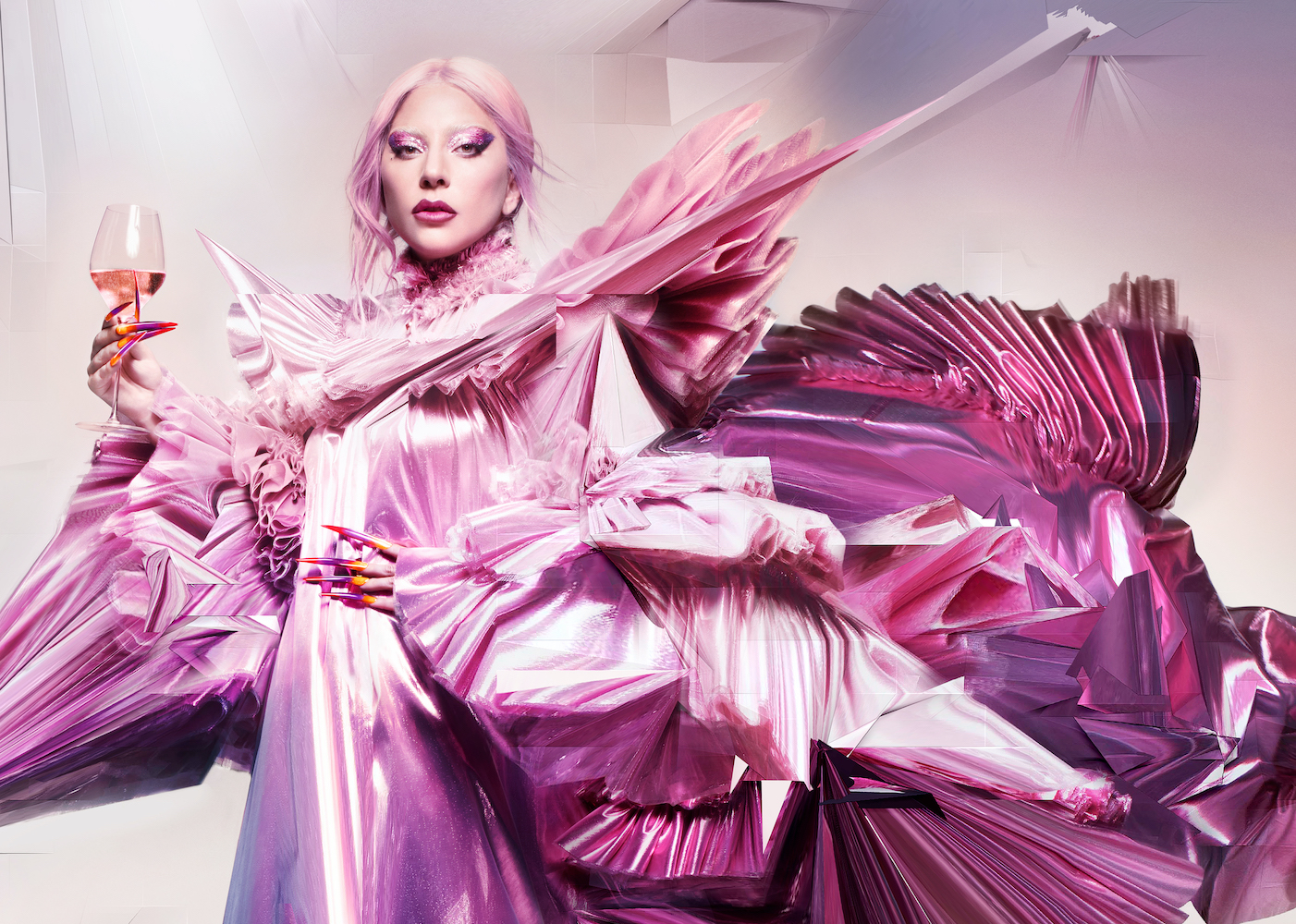Tala Madani’s paintings and animations were recently on view in back-to-back shows at Pilar Corrias’s London
locations, “Skid Mark” (June 4–July 10) and “Chalk Mark” (July 8–September 8). In the first, she revisited imagery
of a fan, hung high on the wall, spinning ominously fast, as she describes it. The show also included images and
animations of interiors, some haunted by ghostlike figures, others smeared with the traces of her “Shit Moms”—an
exploration of the societal trope of the “shitty mom,” motherhood, and actual excrement.
In “Chalk Mark,” education systems and figures of authority are challenged in green and white reminiscent of
the classic schoolroom chalkboard. A line of children go in one end of a large figure, and exit as soldierlike forms out the other. A toddler gazes out the window or taps on the keys of a laptop with an image of what looks like a tidal wave on the screen.
This summer, Madani shared with Whitewall how painting is a way for her to figure things out, putting her
trust in the medium to access what’s in the back of her head.
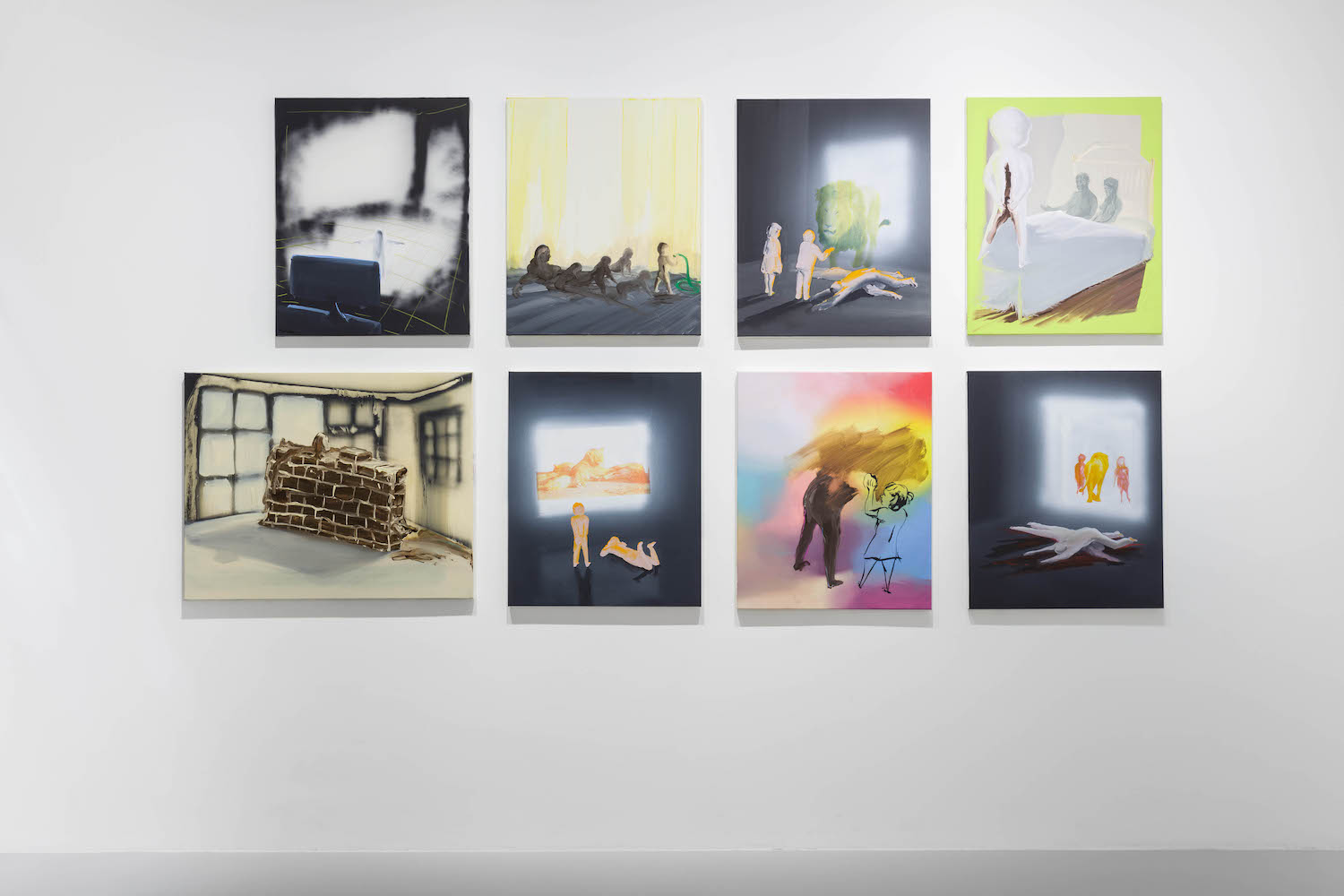
Photo by Mark Blower, Courtesy of the artist and Pilar Corrias, London
WHITEWALL: Was there a starting point for the exhibition “Skid Mark”?
TALA MADANI: I made the animation Skid Mark, and some fan paintings. The show started to form from there, but
I never make paintings for a show. Basically, I’m always working, and a show is an occasion to pull the works of a
certain time frame together and show them.
WW: Can you walk us through the installation of the show, in terms of scale and groupings of works?
TM: Of course. This installation started with the idea of the large fan paintings hung higher than usual and smaller paintings scattered underneath. I thought of the placements for the paintings like cuts in a film, creating associations by placing certain paintings next to each other.
WW: The fan appears in works within both your recent “Skid Mark” and “Chalk Mark” exhibitions at Pilar Corrias. What does the image represent for you here?
TM: The fan is sometimes a cross; sometimes looks like a drone. This thing that hovers over us, rotating dangerously fast above us. I became interested in it as a recognizable object that could affect—on a structural level—the figures in my paintings. It became a force on the figures.
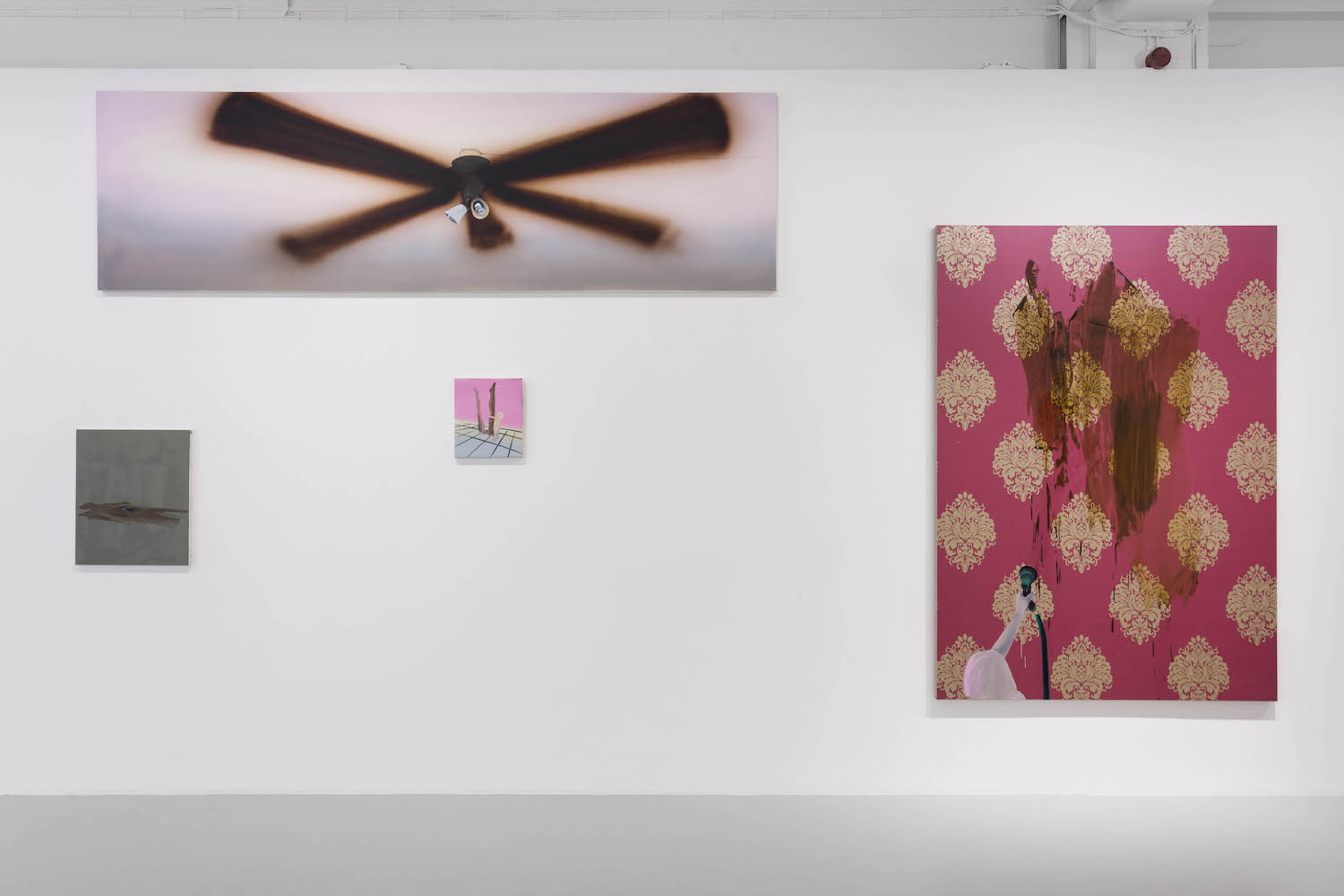
Photo by Mark Blower, Courtesy of the artist and Pilar Corrias, London
WW: You began the “Shit Moms” series in 2019. How does the series continue to evolve for you?
TM: I don’t know what my relationship to this construct of “Shit Moms” really is—painting is a way for me to figure out how it will evolve. The oscillation between reading this construct literally (a shitty mom) or symbolically (What is shit? What is mother?) is interesting for me. We’re also living in a post-Obama and post-Trump era, where the construct of the hero and the antihero has been exhausted. This binary construct is tired out and very problematic.
WW: We see imagery of screens and a focus on interiors in the new “Shit Moms” pieces. Are those in reference to the past year and more time spent at home/inside?
TM: Not particularly. My small paintings always have a slight allusion to an interior, an intimate scale to investigate individual behavior, as opposed to group behavior. The concept of an interior is very interesting, a border we put around ourselves so we can be more comfortable or safe. It’s very primal. But it’s interesting that you mention the lockdown—that turned the border from something you make to something that is made and imposed on you. It’s purely a psychological shift, but suddenly that interior becomes a problem because someone is asking you to stay in it.
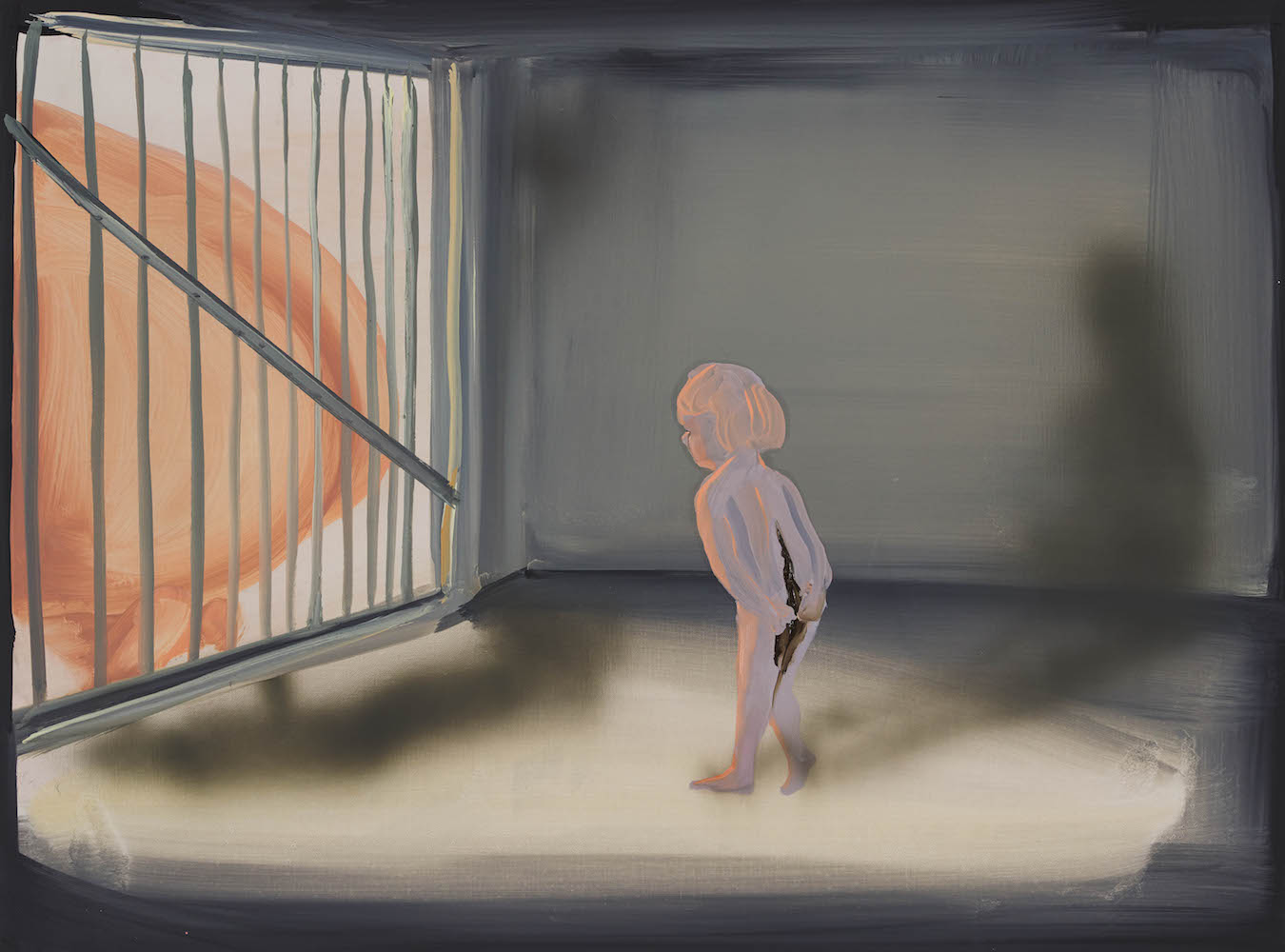
Impressions, Courtesy of the artist and Pilar Corrias, London
WW: For the Shit Moms animation—how did you arrive at the setting of the bourgeois interiors, and why did you want to blend the photographic image with the painted figure in this piece?
TM: The ideal interior is sold to us constantly as the ideal life. So the photo became really useful as the medium that is often used to communicate this ideal. I also got excited seeing the Shit Mom placed in a “real space.” I just wanted to see her walk around these rooms, then I decided to embrace the boredom of that action and an attempt at masturbation seemed like the logical thing she would do when bored in that setting.
WW: When you’ve talked about starting the “Shit Moms” series, which began after smearing the image of a mother with a pristine child—you wondered, “Why haven’t I seen this before?” And as a viewer and mother, that’s how I felt seeing this series for the first time. It’s genius, and also why haven’t we seen this before? Have you felt that reaction from others, and does that inform the work at all?
TM: Thank you. I was very happy that the work registered as it did with some of the viewers. I try not to lean into the public reaction to my work whether it’s positive or negative. Because that reaction, its source or position, is very opaque to me.
WW: The “Chalk Board” series with that iconic chalkboard green and white immediately transports viewers to the classroom. How did you want to address education and conformity?
TM: I became interested in a method called “direct draw,” where a teacher shows you how to draw, let’s say a flower, by showing you simple shapes to copy. In this method, the students are copying something without realizing how it will later make the whole image; there is a disconnect with the subject, and I found that profoundly unsettling. I started using the same approach over and over to draw this uniformed man, copying and repeating him. The structure of education systems in relation to authority is also very interesting.
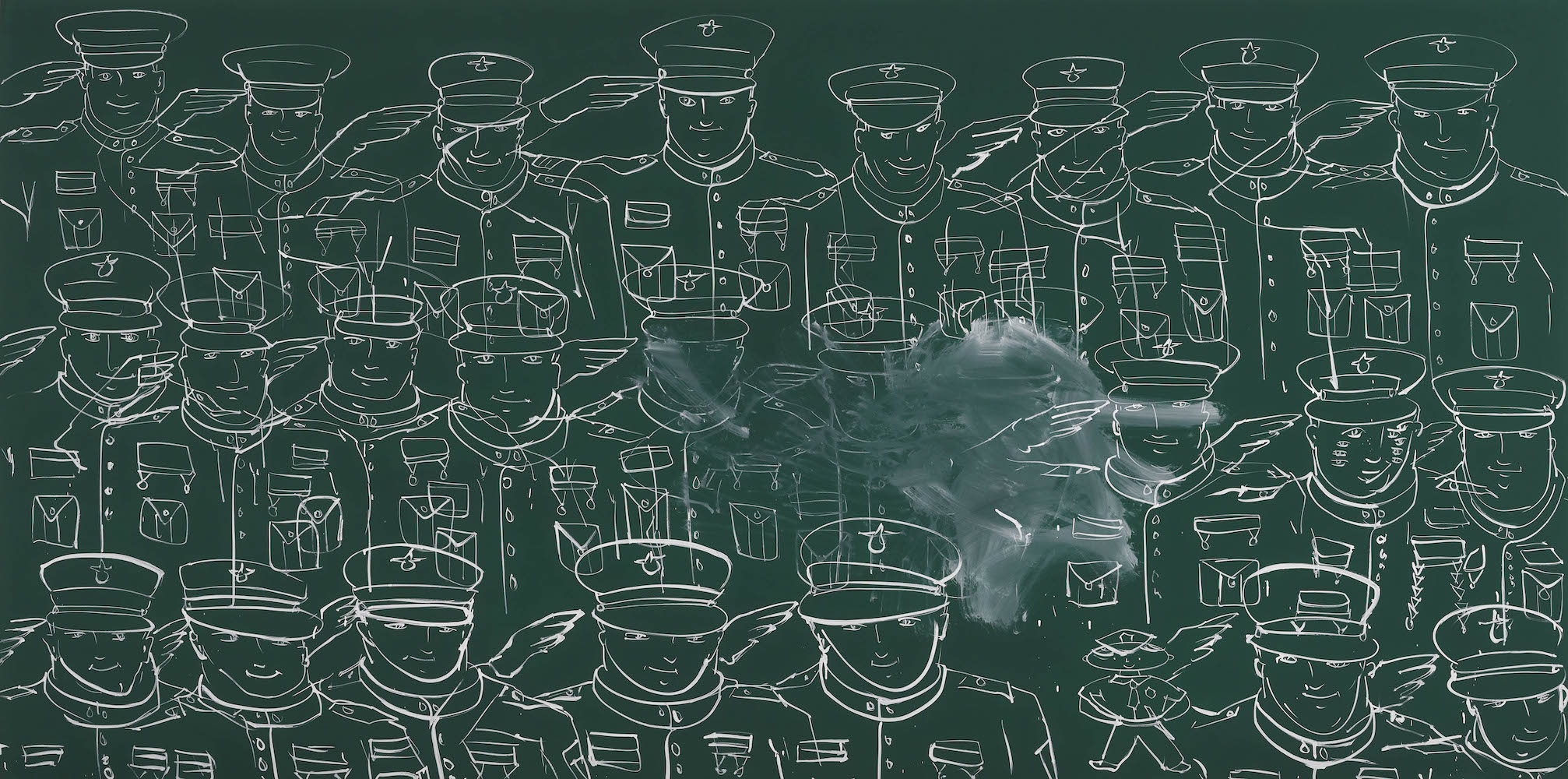
Blackboard (Salutations), 2021, Courtesy of the artist and Pilar Corrias, London
WW: You’ve talked about trusting the medium of painting, letting it show you what’s in the back of your head you haven’t accessed yet. What’s the process like for you, getting to that space, where you can access that in painting?
TM: It’s hard to pin down. There isn’t a direct process that would always work; it’s more about recognizing it during or after (usually after) something more intuitive is coming into play. It can come through durational painting, or whatever one might do so the awareness of one’s body or movement or choices are in the background, and you’re dealing very presently with something in front of you.


